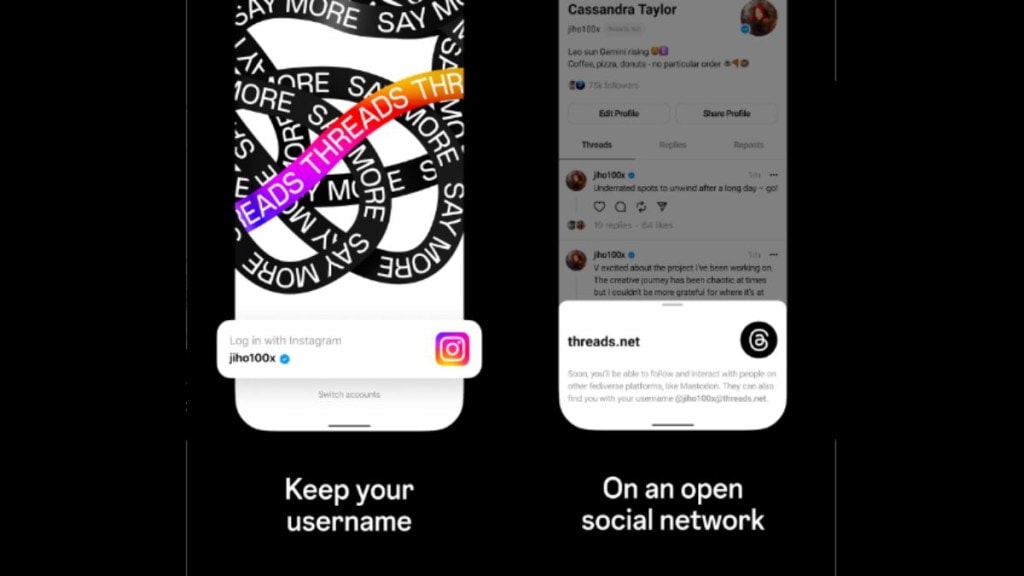It’s been A week since Facebook parent Meta launched Threads, a standalone microblogging app, which has surpassed 100 million users already, becoming the fastest-growing app. Although market mover Twitter retains its lead with an estimated 354 million users worldwide — about 4% lower than last year — Threads has already caught the brand marketers’ attention. Take the case of early adopters like Nike, which has started sharing behind-the-scenes content from its myriad photoshoots and product launches, or Adidas, which is using Threads to unlock early access to new products. Don’t be surprised if more brands start allocating serious money to this platform as it seamlessly integrates with Instagram, offering cross-promotion opportunities.
Indeed, a study by Website Planet has noted that of the brands analysed on July 7 — that is, two days into launch — 87% had more engagement for their posts on Threads compared to Twitter. On an average, the brands had eight times more ‘likes’ on the new platform, with an average engagement rate of 0.45% vis-à-vis Twitter’s 0.02%.
While the app does lack functions such as the ability to edit posts, access through web browsers, direct messaging, or even hashtags, one advantage it has over Twitter is that one can carry over the verification of accounts from Instagram and also leverage the Meta Ads library for an all-in-one view, offering more focused targeting than Twitter.
For the records, Instagram’s India user base is 400 million, which means these users can instantly sign up for Threads. Twitter has around 24 million users in India and Koo has 6-7 million active monthly users.
“Meta’s algorithms are designed to reach interested audiences more effectively, leading to potentially higher returns on ad investment unlike Twitter, which does not offer micro targeting,” says Santosh Singh, SVP and global head, marketing, business excellence & innovation, Tata Technologies. “This will allow brands to manage their audience on multiple platforms of Meta with ease and do differential targeting based on content and audience type.”
One might ask, if it is the same audience that inhabits both Instagram and Threads, why must a brand make separate investments on the two, even if the content is different? Well, the dilemma is the same that you have on traditional media: Sometimes it is the same set reading your newspaper and watching your TV channel. So would you choose one over the other? Or would you spread the investment for optimal returns?
Having said that, by design the platform is more intimate and personal, which makes it a great one for brands to connect with their targets in a more meaningful way. Ramya Ramachandran, founder of content-to-commerce company Whoppl, notes that it also gives smaller creators an opportunity to level up the game. “They can build something from scratch and leverage the platform for a stronger reach,” she adds. “Threads includes posts by people you follow, from new creators, and people you haven’t discovered yet and these posts can be up to 500 characters long and videos up to 5 minutes in duration. It not only offers a dynamic space for sharing real-time updates in a textual format, the potential for new creators to thrive is immense, whether they are on Instagram or not,” she says.
Ambika Sharma, founder & MD, Pulp Strategy, has a piece of advice: To bring out the best of the platform, a unique content approach should be defined for Threads — content designed to start conversations, looking at each Thread as equal to breakout rooms in a conference. Interestingly, most people who joined Threads followed the brands they follow on Instagram by default. So if your Threads content is a duplication of Instagram, it can become boring really quickly.
Need to stand out
That is really the crux of the issue: Threads must not take the early curiosity around its launch as a measure of its future success . In general people like newness. So yes, on first response count Threads is doing just fine — from a Google trends score of 0, it moved to 75 in no time. But moving up the search ladder is easier than maintaining traction and that is its main challenge. It is imperative that the app creates a unique position for itself in the market, especially in the vernacular market of Bharat, where apps like Koo have a good hold.
To get there, it has to support multiple Indian languages, integrating local content and trends, and understand cultural nuances, says Sharma of Pulp Strategy. In other words, it has to offer a compelling reason for users to adopt it as their preferred platform. Adam Mosseri, head of Instagram since 2018 and now the de-facto leader of Threads, did mention recently that language support was on the to-do list.
Here content quality would be the real dealmaker. Himanshu Arora, co-founder, Social Panga, says, “The language barrier will be immaterial if the quality of content is great; the driving force should be what kind of people join the platform and not just what features it offers.”

